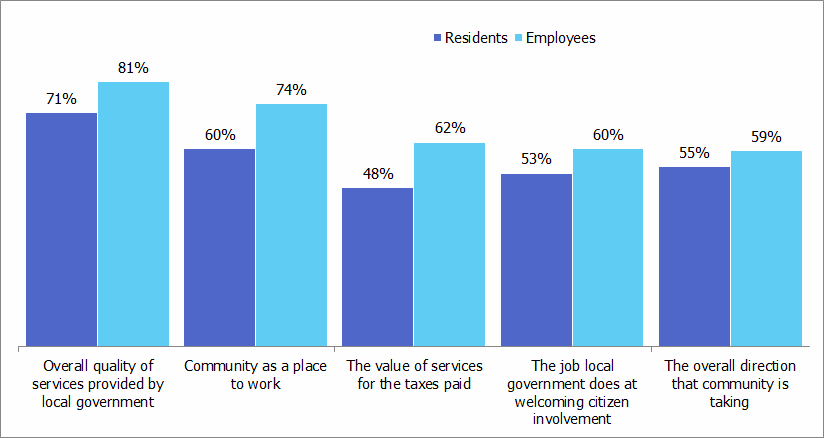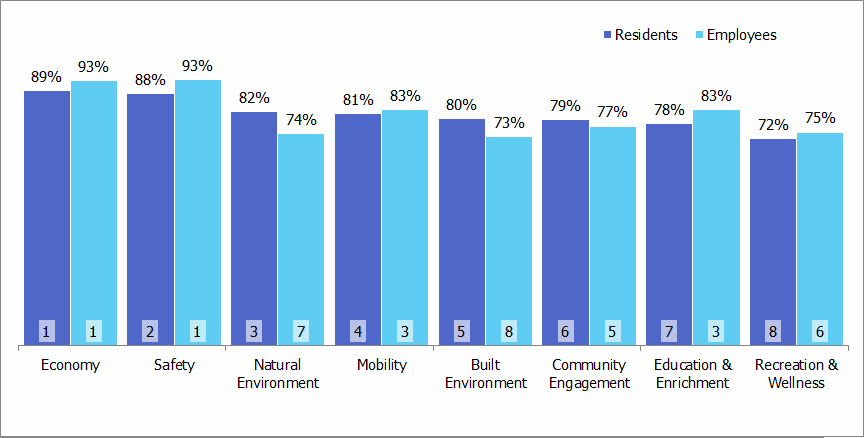Share this
Subscribe to Our Newsletter

Featured Report
Download your copy of "Make Informed Decisions with Confidence: Solving The Community Engagement Puzzle" today!
by NRC on October 13, 2017

- By Tom Miller -
What would you do if you discovered that your employees have different priorities than the residents they serve? Or what if your residents think more poorly of some aspects of the community than do your employees who help to improve those community qualities?
These aren’t just hypothetical questions with impossible answers. The National Employee Survey™ (The NES™) includes a set of questions about service quality and community priorities that are asked of residents on The National Citizen Survey™ (The NCS™).
Recently, we examined the answers of residents and employees from 11 jurisdictions in 9 states. Employees gave their answers while completing The National Employee Survey, which addresses employee perspectives about the local government workplace; residents responded to The National Citizen Survey, which covers many dimensions of the quality of community life. Each group was asked the same 22 questions about the quality of services and public trust and questions about the importance of eight key facets of community priorities on anonymous self-administered surveys. Almost 5000 employees participated along with over 9000 residents (representing random samples of community adults).
When we look at evaluations across places to compare employee and resident perspectives, the two groups, on average, give similarly positive ratings to community quality of life, the natural and built environments, health and education, the reputation of the community and the confidence they place in their government.
However, many assessments of community life reveal a disconnect between resident sentiments and the opinions of the employees who do the public’s work. Let’s look first at assessments of community quality.
Across the 22 questions evaluating community quality asked of both residents and employees, 10 show the largest discrepancies of opinion between employees and residents. Employees rate their own services and overall community direction higher than do residents. Specifically, employees rate higher than residents the services these employees provide, the value of their services for the taxes residents pay, the job the jurisdiction does at welcoming citizen involvement, the quality of the jurisdiction as a place to work and the jurisdiction’s overall direction.

Residents, on the other hand, give better ratings not to services or the government but to community characteristics and, curiously, the honesty of the local government. In particular, residents think better of the community as a place to live, a place where they feel safe, the ease of travel, the sense of community and leaders’ honesty. The last more positive rating comes from this question: “please rate the following categories of [your government’s] performance.” “Being honest.” One may wonder if the employees know something the residents don’t.

Now, let’s see what the two groups think about the importance of community features. When we ask about eight key community facets – economy, safety, natural environment, mobility, built environment, community engagement, education and enrichment, and recreation and wellness – a large majority of both employees and residents indicate that each is essential or very important. For both groups, the economy and safety represent the most important aspects of community (ranked 1 or 2). For residents, the natural environment and mobility come next (rank 3 and 4), but education is more valued by employees (rank 3) and the natural environment comes in at number 7 out of 8. The built environment comes in as the least important community characteristic for employees, but recreation and wellness receives the lowest rating of importance among residents. Still, even the least important community characteristics are thought to be important by close to three-quarters of each group.

Imagine how useful it may be to the training of employees and communication with residents if this kind of reconnaissance could become the platform for discussions about what makes for great places. Because these data represent averages across many communities, your community will have its own profile, revelations and opportunities to get on the same page, or at least to understand the perspectives of these symbiotic local groups.
Related Articles

Download your copy of "Make Informed Decisions with Confidence: Solving The Community Engagement Puzzle" today!
These Related Stories


